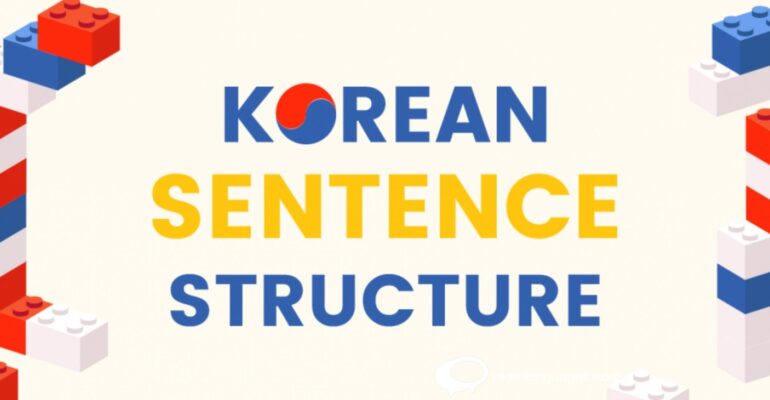Korean Sentence Structure: The Practical Guide to Basic Word Order Patterns
Korean Sentence Structure: The Practical Guide to Basic Word Order Patterns
Korean sentence construction is a challenging language skill.It might be intimidating for novices due to its unusual sentence structures and word order patterns. However, for successful communication and precise idea expression, it is essential to comprehend and master Korean sentence structure. In order to help you understand this fascinating facet of the language, we’ll break down the essential elements of basic word order patterns in Korean and present examples.
Estimated reading time: 2 minutes

Subject-Object-Verb (SOV) Word Order:
The word order in Korean is subject-object-verb (SOV), with the subject appearing first, the object second, and the verb third.
- Example: “나는 사과를 먹어요.” (I eat an apple.)
Subject-Predicate Word Order:
Korean sentences consist of a subject and predicate.
- Example: “저는 학생이에요.” (I am a student.)
Topic-Comment Word Order:
Korean uses topic-comment structure, prioritizing known information and adding new information.
- Example: “한국에 갔어요. (I went to Korea.) 한국은 정말 아름다워요. (Korea is really beautiful.)”
Modifier-Modified Word Order:
In Korean, the modified term comes before the modifier in a pattern known as modified word order.
- Example: “예쁜 꽃” (beautiful flower), “작은 개” (small dog)
Time-Place-Manner Word Order:
Korean commonly uses the word order time-place-manner to indicate time, place, and manner in a statement.
- Example: “오늘 학교에서 친구들과 즐거운 시간을 보냈어요.” (Today, I had a fun time with friends at school.)
Conclusion:
It is crucial to comprehend the fundamental word order patterns in Korean in order to form sentences that accurately and clearly express your ideas. You will have a strong basis for crafting Korean sentences once you have a firm understanding of the essential structures, such as the SOV pattern, subject-predicate order, topic-comment structure, modifier-modified arrangement, and time-place-manner word order. Exercise your knowledge, use these patterns in conversation, and gradually broaden your comprehension of more intricate sentence constructions. You will become more accustomed to the Korean sentence form with practice and patience, opening up fresh avenues for conversation.
Learn Languages Store
Vashi,
Email: services@learnlanguages.store










